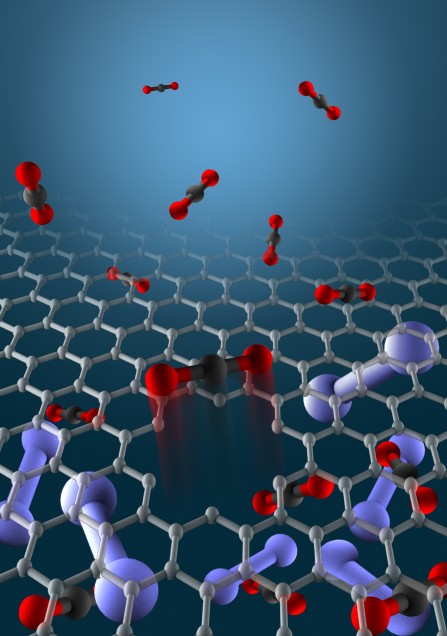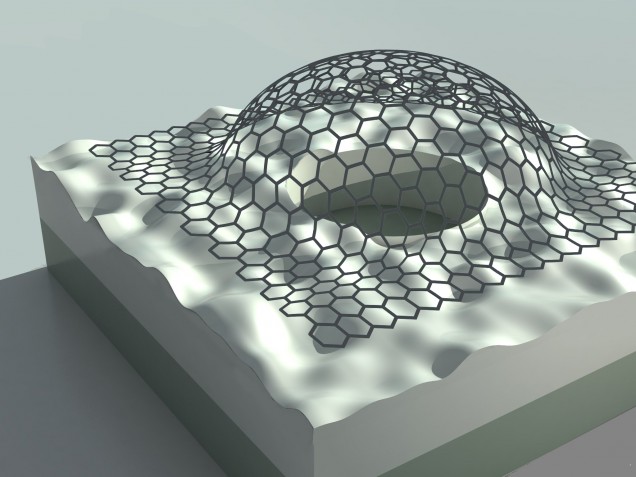Research
Gas Separation and Defect Engineering of Graphene Membranes

Separation processes are critical to a large number of industries from oil refining and water purification to natural gas processing. Membranes suitable for energy efficient separation barriers should be as thin as possible to maximize flux, mechanically robust to prevent fracture, and have well-defined pore sizes to increase selectivity. Graphene, a single atomic layer of graphite, represents the thinnest membrane possible (one layer of atoms) with the smallest pore sizes attainable (single atomic vacancies), and unprecedented mechanical and chemical stability. We are developing an experimental and collaborative modeling effort to study numerous scientific issues exploring the extraordinary potential of graphene as a material for membrane separations.
Adhesion in Graphene
 Nanomechanical structures live in a world where van der Waals forces are ever-present, and as structures become smaller the influence of van der Waals forces becomes increasingly significant. As a single suspended layer of atoms, graphene sheets are among the thinnest objects imaginable. This situates graphene, and many nanomechanical structures in general, in a regime that is not yet well understood or even studied. To this end, we work on a tightly-coupled experimental-theoretical research program to understand the mechanical behavior of graphene nanostructures as influenced by van der Waals forces.
Nanomechanical structures live in a world where van der Waals forces are ever-present, and as structures become smaller the influence of van der Waals forces becomes increasingly significant. As a single suspended layer of atoms, graphene sheets are among the thinnest objects imaginable. This situates graphene, and many nanomechanical structures in general, in a regime that is not yet well understood or even studied. To this end, we work on a tightly-coupled experimental-theoretical research program to understand the mechanical behavior of graphene nanostructures as influenced by van der Waals forces.
Ionic Transport through Porous Graphene
An intriguing application for porous suspended graphene membranes is as an ultrathin membrane barrier for liquids specifically ion separation. Graphene ionic membranes are potentially revolutionary devices that could displace the relatively thick membranes currently in commercial use; indeed, these membranes may offer a combination of thickness, controlled pore-size ranges, and pore density that surpass that available with state-of-the-art membranes. There is a clear and compelling need for novel next-generation materials for a range of challenging membrane applications operating in fluids such as in biotechnology (ion and molecular separation), energy (batteries and fuel cells) and environment (desalination and decontamination).
Mechanical Properties of Ultra Thin Films
The miniaturization of electromechanical devices promises to be revolutionary in the coming decades as the miniaturization of electronic devices was in the previous ones. Devices ranging from nanoscale resonators, switches, and valves have applications in tasks as diverse as infomation processing, molecular manipulation, and sensing. We seek to develop a whole new class of atomically thin multifunctional nanoelectromechanical structures based on various thin film materials.
Page Last Updated: 6/23/15
